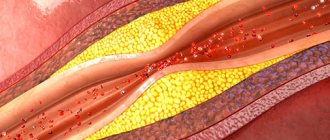Headaches are one of the most common reasons why patients turn to neurologists. All factors that cause such disorders are conventionally divided into 2 groups: organic (they can be seen on MRI images) and functional. MRI is performed specifically to detect organic abnormalities of the brain, which include:
- tumor formations;
- hydrocephalus (accumulation of cerebrospinal fluid in the ventricles of the brain);
- aneurysms, stenoses and other vascular lesions;
- sinusitis, sinusitis and other inflammatory phenomena in the paranasal sinuses;
- cerebral hemorrhage;
- inflammation of the brain and its membranes (encephalitis, meningitis);
- congenital pathologies of brain structures.
Very often, the root cause of the disease cannot be seen in the images, and then the doctor determines its etiology based on indirect signs.
Another cause of migraine may be cerebral circulatory disorders, for which an MRI procedure in angio mode is prescribed. For diagnostic accuracy, the ideal option is to do an MRI at the time of an attack, when you can assess the intensity of blood flow and identify acute circulatory disorders.
During the procedure, radiologists can detect the so-called. "cervical artery syndrome", which can affect one side or spread to both vessels. This entails paroxysmal pulsating headaches, provoked by compression of the cervical artery and aggravated by head movements. The root cause of this phenomenon is usually trauma.
How is MRI performed for migraine?
For complaints of recurrent headaches, MRI is prescribed to differentiate from severe organic brain lesions that have a structure similar to migraine. The pain caused by migraine cannot be eliminated with analgesics. Most often, people begin to uncontrollably take pills, which only worsen their condition.
When conducting a tomography study for migraine, the doctor follows a certain algorithm - scanning the brain, vascular bed, and cervical vascular system. If necessary, angiography data of the cervical vessels is added to this to assess the state of blood flow in the arteries.
On MRI images, migraine is manifested by multiple foci of ischemic origin, blood flow disturbances (recorded by a tomograph only during attacks). Immediately before a migraine attack, the blood vessels in the brain dilate, after which a sharp spasm occurs.
Diagnosis of migraine and MRI
Diagnosis of migraine is usually carried out in two or three stages. The patient is examined and anamnesis collected during the initial consultation with a neurologist. Next, depending on the indications, the specialist prescribes treatment for the patient (for example, physical therapy and medications) or a series of examinations, based on which the doctor can make the correct diagnosis. Such studies include magnetic resonance imaging: it is an important diagnostic method, because the images obtained during the MRI study provide a complete picture of the location and nature of the identified pathology.
MRI of the brain is the main study in the diagnosis of migraine, which in most cases is irreplaceable. MRI scanning is carried out in three mutually perpendicular projections, thanks to which the radiologist can identify various pathological processes and see any, even the smallest, changes in the brain. The high contrast of the resulting images makes it possible to evaluate in detail the cortex and white matter of the brain, the basal subcortical ganglia, large arteries included in the slice, the brain stem and the contents of the posterior cranial fossa (which in turn is poorly visualized on CT). MRI for migraine is required by a neurologist to make a clinical diagnosis and plan effective treatment. Often, the doctor additionally prescribes magnetic resonance angiography.
Headaches after MRI
Although tomography is considered a completely safe procedure, many patients complain of increased headaches, often accompanied by nausea, general weakness, and dizziness.
Painful sensations are concentrated in the area of the back of the head or the crown. Doctors say that this phenomenon is associated with the increased sensitivity of migraine patients to external factors and is temporary. In most cases, this condition goes away within a day after the study, and pain of this nature is easily eliminated with pills. Therefore, you should not be afraid of the procedure.
If the pain does not go away after 24 hours, contact your doctor, who will conduct an examination and prescribe treatment. Usually in such a situation, neurologists recommend, in addition to medications, to drink less fluid, not to strain either mentally or physically (it is best to wait for the condition to stabilize at home, observing bed rest). MRI cannot cause any harm to health, since it is non-invasive and the safest of all hardware diagnostic methods existing today.
Migraine
3110 January 10
IMPORTANT!
The information in this section cannot be used for self-diagnosis and self-treatment.
In case of pain or other exacerbation of the disease, diagnostic tests should be prescribed only by the attending physician. To make a diagnosis and properly prescribe treatment, you should contact your doctor. Headache is one of the most common complaints of patients when visiting a family doctor or neurologist. The cause of headache syndrome can be a number of factors.
Headaches vary in duration, nature, and intensity. According to their origin, they are divided into primary and secondary. Primary headaches are an independent pathology in which headache is the first and main complaint. These include migraine, tension headache, and cluster headache. The cause of secondary headaches is diseases that arise as a result of damage to cranial structures (traumatic brain injury, tumors, brain infections, vascular pathology) or that appear for the first time in connection with another disease. This article will discuss one of the forms of primary headache, namely migraine.
The most common forms of migraine
Migraine is a type of headache that is characterized by periodically recurring attacks of throbbing headaches, often with one-sided localization and sufficient intensity that it makes a person’s daily activities difficult.
Migraines may worsen when climbing stairs or during physical activity. This pain is accompanied by at least one of the following symptoms: nausea, vomiting, increased sensitivity to light and sound. The duration of the attack usually ranges from 4 hours to 3 days. These signs are characteristic of migraine without aura (80% of cases). Migraine with aura (up to 20% of cases) includes, in addition to what is described above, a complex of reversible neurological symptoms preceding the attack. These include:
- completely reversible visual disturbances (flickering spots, stripes, blurred vision);
- completely reversible sensory symptoms (tingling sensation, numbness);
- completely reversible speech impairment;
- completely reversible distortions in the perception of the size and shape of objects.
Causes of migraine attack
It has been proven that migraine headaches are based on neurogenic inflammation and secondary dilatation (persistent dilatation) of blood vessels.
In most patients suffering from migraine, there is an indication of the familial nature of the disease.
The occurrence of migraine depends on the level of female sex hormones, so women suffer from it more often.
In patients suffering from migraine, the excitability of brain cells is increased, which increases when exposed to external and internal migraine provocateurs. Most often, attacks are caused by emotional stress, weather changes, menstruation, hunger, lack of sleep or excess sleep, certain foods (chocolate, citrus fruits, bananas, fatty cheeses) and alcohol intake. In response to stimulation of brain structures, specific proteins are released that cause dilation of brain vessels and activation of pain receptors in their walls. Pain impulses enter the sensory (perceptive, sensitive) cortex of the brain, which forms the sensation of throbbing pain.
What diseases can cause headaches?
Migraine refers to a primary headache when there are no diseases that could provoke an attack. However, secondary headaches, that is, those caused by other diseases, can resemble migraines.
Therefore, the doctor usually conducts a thorough examination of the patient in order to clarify the cause of migraine-like conditions, since the patient’s treatment tactics depend on this.
The following are possible sources of secondary headaches:
- head and/or neck injury;
- vascular lesions of the cervical spine;
- non-vascular intracranial lesions (for example, brain tumors, intracranial hypertension of various origins);
- taking medications and/or stopping them;
- infections;
- violation of the structures of the skull and face;
- mental illness.
Which doctors should I contact if I develop a migraine?
First of all, you should contact your general practitioner. As a rule, migraine does not reveal any changes in somatic and neurological status. If they are detected, the doctor will give a referral for laboratory and instrumental examinations and consultation with specialized specialists: , , , dentist, otolaryngologist to exclude/confirm secondary headaches.
Diagnosis of migraine and additional examinations if secondary headache is suspected
A detailed questioning of the patient is the basis for correct diagnosis. If a migraine is suspected, the doctor may prescribe laboratory and instrumental examinations to the patient, which he selects individually depending on the suspected causes of the headache.
Clinical blood test with a detailed leukocyte formula. One of the main laboratory tests for quantitative and qualitative assessment of blood cells. Includes a cytological examination of a blood smear with counting the content of different forms of leukocytes and determination of the erythrocyte sedimentation rate and smear microscopy in the presence of pathological changes.
Treatment
Migraine pain cannot be relieved with conventional antispasmodics and analgesics. These drugs can only work at the very beginning of an attack. To relieve severe pain, combination drugs are used, the components of which can enhance the effect of each other. Mainly used:
- A combination of acetylsalicylic acid and caffeine.
- Serotonin receptor agonist drugs.
- Dehydration products.
- Tranquilizers.
- Beta blockers, calcium channel blockers, and antidepressants may be used as prevention.
Taking any medications must be strictly dosed. Exceeding the prescribed dosage not only has a detrimental effect on the body and poses a threat to life, but also often increases pain.
Get a headache diagnosis at Clinic No. 1
- Neurologist appointment
- MRI
- Electroencephalography
- Angiography
For one-time payment for services - 20% discount
Call
Symptoms
The main symptom of migraine is headache. The headache is usually on one side, the nature of the pain is throbbing. The sensations intensify when moving or changing body position. The pain can always be in the same place or change location even within the same attack.
In addition to pain, signs of the disease include:
- Vomiting and nausea without relief.
- Change in sensitivity.
- Visual impairment.
- Speech impairment.
- Photophobia.
- Acute reaction to noise and sounds.
The listed symptoms occur before an attack and are its original harbingers. This phenomenon is called an aura.
Get a headache diagnosis at Clinic No. 1
- Neurologist appointment
- MRI
- Electroencephalography
- Angiography
For one-time payment for services - 20% discount
Call
Migraine prevention
First of all, a patient suffering from headaches will be advised to lead a healthy lifestyle: good sleep at night and physical activity during the day will reduce the frequency of headache attacks. Regular and nutritious nutrition is also necessary, and it is better to minimize the consumption of alcoholic beverages, coffee and chocolate.
Headaches can be a symptom of many different medical conditions, some of which can have serious consequences. Vascular diseases, which often cause painful sensations in the head, can be successfully treated with timely consultation with a doctor.
However, if the patient does not have the opportunity to see a doctor first and then undergo an MRI diagnosis, he can immediately sign up for an MRI of the brain. If any changes are detected in the brain, our radiologist will comment on them and, if necessary, recommend what specialty you should see.
And if you still doubt whether you need to do an MRI for a headache, we recommend that you read the article about in what cases MRI and CT of the brain are prescribed.
Diagnostics
To make a diagnosis, the patient is examined and interviewed. An accurate diagnosis can only be made if the symptoms characteristic of migraine are distinguished from the manifestations of other diseases with similar symptoms. The following diagnostic measures are carried out:
- MRI.
- Electroencephalography.
- Angiography.
For migraines, examination usually does not reveal any organic cause. Diagnosis is made based on symptoms and whether they meet the criteria for migraine. Evaluated:
- Nature of pain.
- Its localization, intensity.
- Presence of vomiting and nausea.
- Presence of photophobia.
- The nature of the aura.








